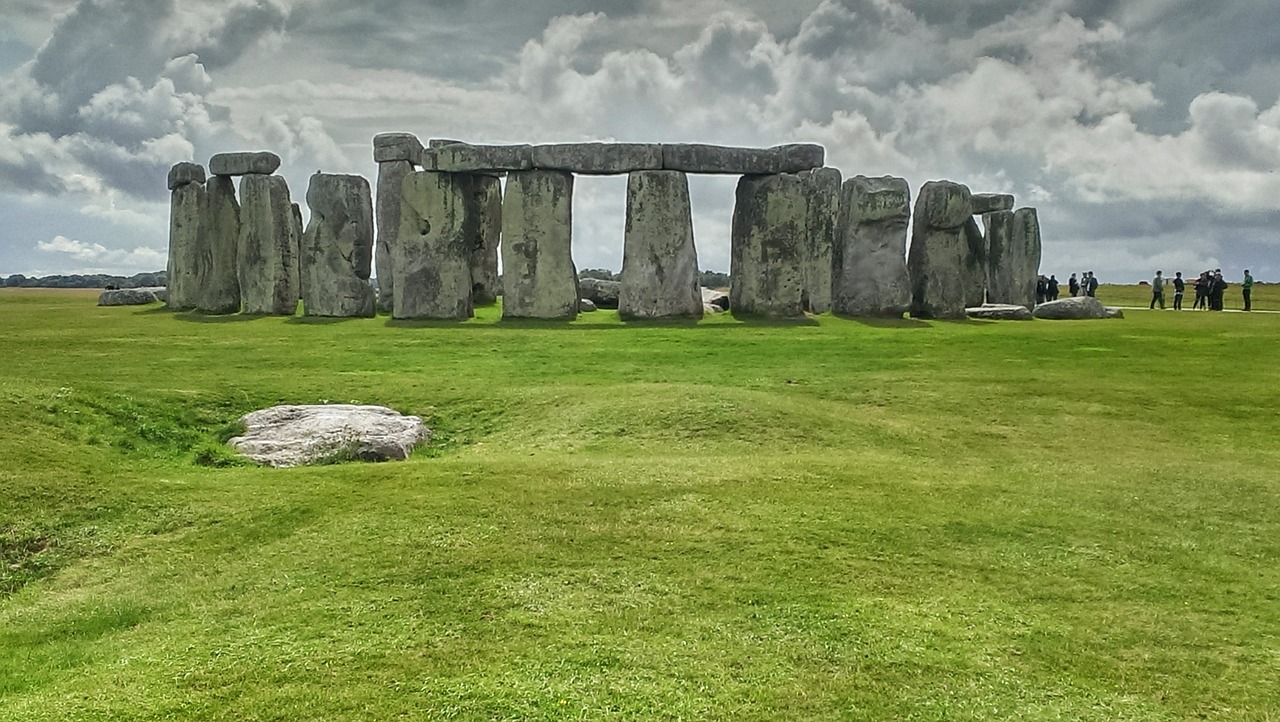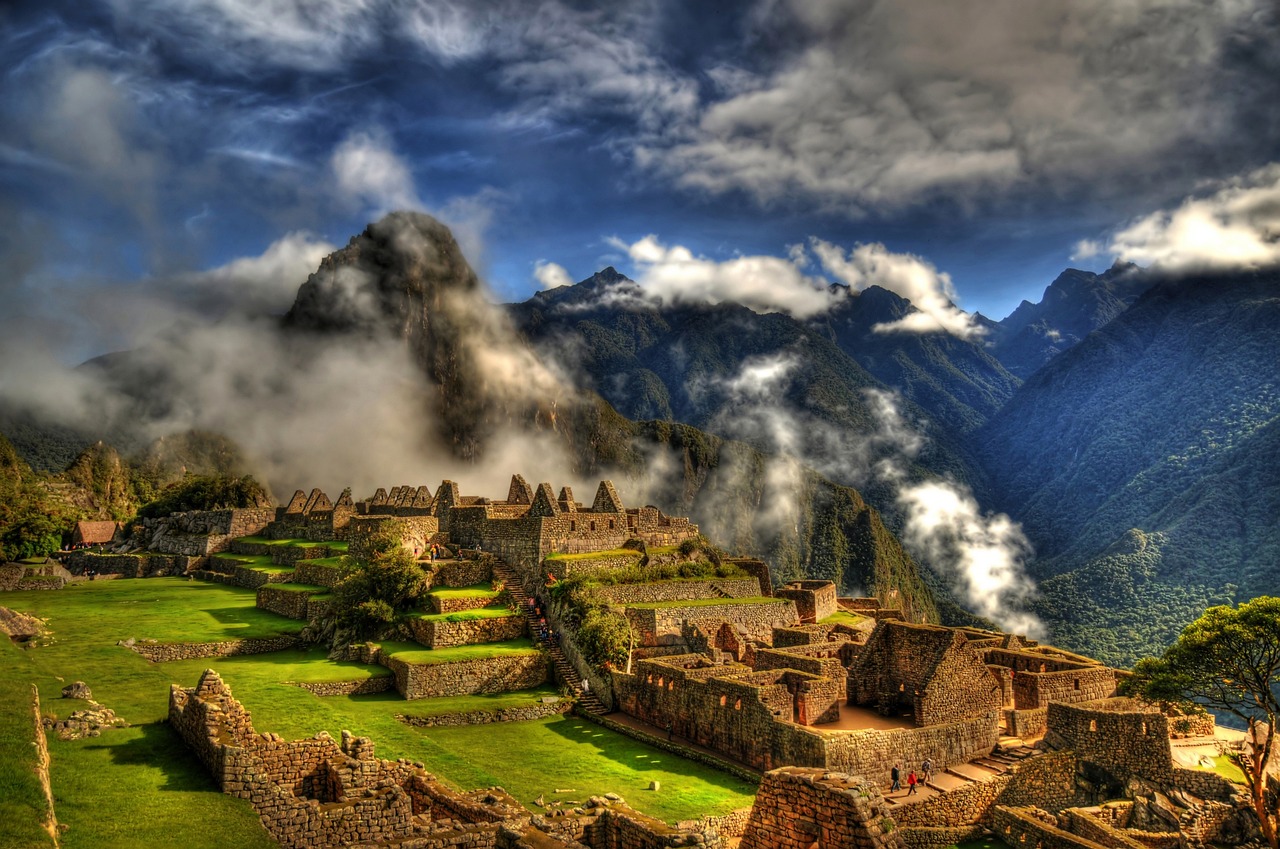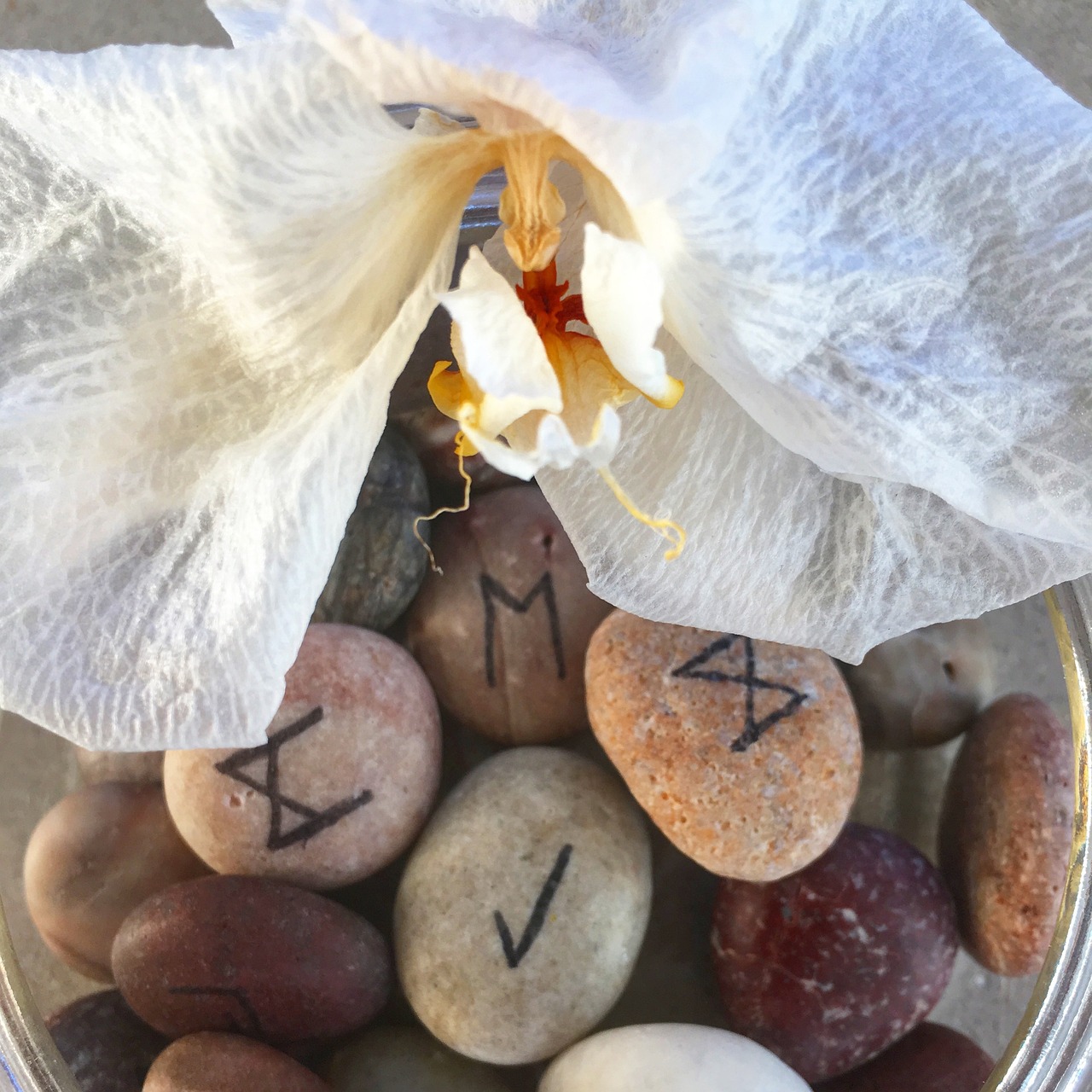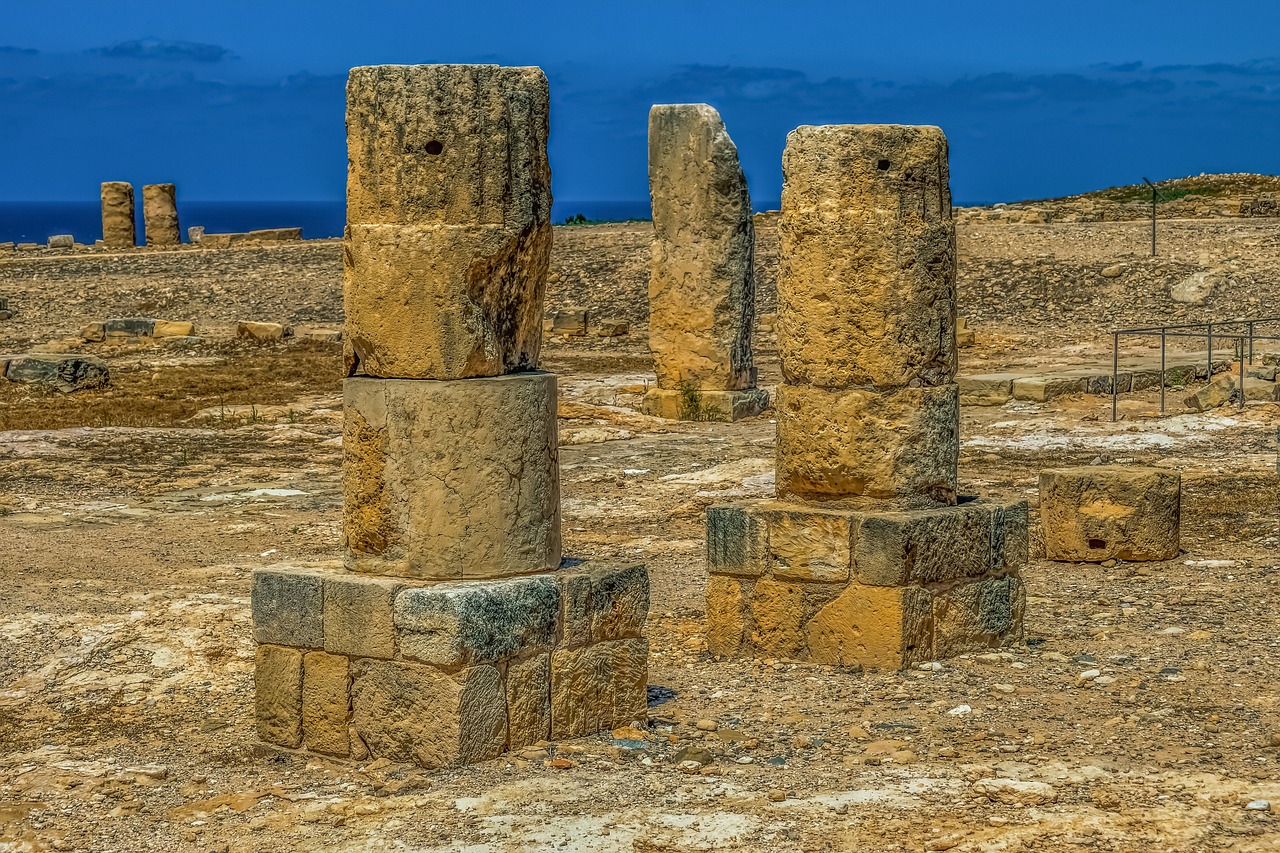The Secrets of Ancient Civilizations' Communication Methods
Ancient civilizations have always fascinated us with their mysterious ways of communication, employing innovative methods that have left us in awe. From hieroglyphics etched in ancient tombs to the rhythmic beats of tribal drums echoing across vast lands, the secrets of how these ancient societies conveyed messages and information have intrigued historians and archeologists for centuries.
One of the most renowned forms of communication used by ancient civilizations was hieroglyphics and pictograms. The Egyptians and Mayans, among others, developed intricate systems of symbols that represented words, sounds, and ideas. These visual forms of communication were not only practical but also served as artistic expressions, telling stories and conveying messages through elaborate drawings and characters.
Another fascinating method of communication was through smoke signals and beacon fires. Civilizations like the Native Americans and Chinese used these methods for long-distance communication, sending messages across vast terrains or alerting allies of impending danger. The sight of smoke rising in the distance could carry crucial information, acting as a strategic tool in warfare and diplomacy.
The ancient Incas, known for their advanced engineering and organizational skills, utilized a unique communication system called the Quipu. This method involved encoding information in the form of knotted cords, with the arrangement and colors of the knots holding specific meanings. The Quipu system was employed for various purposes, including recording historical events, census data, and even mathematical calculations.
Carrier pigeons, with their remarkable homing abilities, were used as avian messengers by civilizations like the Romans and Persians. These feathered couriers could swiftly deliver messages across long distances, providing a reliable means of communication in an era before telecommunication. The speed and efficiency of carrier pigeons made them invaluable assets in military campaigns and diplomatic missions.
Drums and sound signals played a vital role in communication for many ancient tribes and civilizations. The rhythmic beats of drums, along with specific sounds and signals, were used to convey messages over vast distances, especially in regions where spoken language was not practical. The unique cadence of drumming could relay warnings, celebrations, or urgent messages with precision.
Runes and inscriptions found on stones and artifacts offer a glimpse into the written communication of civilizations like the Vikings and Celts. These ancient alphabets and symbols were used to convey messages, record laws, and document historical events. The intricate carvings and inscriptions found in archaeological sites provide valuable insights into the language and communication practices of these ancient peoples.
As civilizations evolved, so did their methods of communication. The development of Morse code and telegraphy marked a significant shift towards more efficient long-distance communication. These systems revolutionized the way messages were transmitted, connecting distant locations in a matter of seconds and laying the groundwork for modern telecommunications.
Artistic representations and symbolism were also prevalent forms of communication in ancient civilizations. Intricate designs, motifs, and artistic expressions carried hidden meanings and messages, serving as a visual language that transcended spoken words. Through art, ancient societies conveyed their beliefs, stories, and cultural heritage to future generations.

Hieroglyphics and Pictograms
As we delve into the world of ancient civilizations, one of the most mesmerizing forms of communication that emerges is the intricate system of . Imagine a world where symbols and images were not just decorations but the very essence of conveying messages and stories. The Egyptians and Mayans were masters of this art, using visual representations to communicate their beliefs, history, and daily life. Each symbol held a deeper meaning, weaving a tapestry of words without letters.
These hieroglyphics were not mere drawings but a complex language system that required a deep understanding of symbolism and context. The Egyptians, with their elaborate tombs and temples adorned with hieroglyphs, left behind a legacy of communication that continues to awe and inspire us today. The Mayans, too, carved intricate pictograms on their monuments, capturing the essence of their civilization in stone.
Unlocking the secrets of hieroglyphics and pictograms is like deciphering a cryptic code that opens the doors to ancient wisdom and knowledge. Each symbol tells a story, each image paints a picture of a bygone era. It is a language that transcends time, speaking to us across centuries and connecting us to the minds of those who came before.

Smoke Signals and Beacon Fires
Smoke signals and beacon fires have long been utilized by ancient civilizations as effective means of communication, especially in situations where long-distance messaging was required. The Native Americans, known for their adept use of smoke signals, would create distinct patterns of smoke by burning different materials, conveying messages across vast distances through this visual language. Similarly, the Chinese employed beacon fires atop strategic locations to transmit important information swiftly, warning of impending dangers or signaling military maneuvers.
Imagine standing on a hill, watching as columns of smoke rise into the sky or the glow of a beacon fire illuminates the darkness of night, carrying with them urgent messages or crucial warnings. These methods of communication were not only practical but also held significant strategic importance during times of conflict or when swift communication was essential for the survival of a civilization.

Incan Quipu System
The Incan Quipu System is a remarkable method of communication employed by the ancient Incas, showcasing their ingenuity in encoding information through knotted cords. These intricate cords were not merely random knots but held a sophisticated system of communication within their arrangement and colors. Each knot, its position, and the color used conveyed specific meanings, allowing the Incas to record numerical data, keep track of accounts, and transmit messages across their vast empire.
Imagine a network of colorful cords hanging in an Incan administrative center, each knot representing a different piece of information, much like a modern-day spreadsheet but in a tactile and visual form. The Quipu served as a versatile tool for the Incas, enabling them to communicate complex data such as census records, agricultural statistics, and even historical events through a series of knots and colors.
Researchers have long puzzled over the exact encoding system of the Quipu, akin to cracking a code that unlocks the secrets of an ancient civilization's communication. The Quipucamayocs, the specialized individuals tasked with creating and interpreting the Quipu, held a crucial role in ensuring accurate communication and record-keeping within the empire.
While the Incan Quipu System may appear enigmatic to modern eyes, its significance in facilitating communication and administrative functions within the Incan society cannot be overstated. It stands as a testament to the innovative ways in which ancient civilizations devised unique methods to convey information and maintain order in their complex societies.

Carrier Pigeons and Avian Messengers
Carrier pigeons, also known as avian messengers, played a crucial role in ancient civilizations like the Romans and Persians. These remarkable birds were not just ordinary pigeons; they were trained to deliver important messages across vast distances with remarkable speed and accuracy. Imagine a world where urgent news could travel faster on the wings of a pigeon than by any other means of communication available at that time.
These avian messengers were highly valued for their ability to navigate long distances and deliver messages reliably. Trained pigeons were used in military operations, diplomatic affairs, and even in sporting events to announce winners. The bond between humans and carrier pigeons was extraordinary, as these birds were trained to return to their home base after delivering their messages, making them a trusted means of communication.
Unlike modern electronic communication, carrier pigeons embodied a natural and organic form of messaging. They relied on their innate homing instincts and exceptional flying abilities to carry messages swiftly and securely. The sight of a pigeon soaring through the sky with a tiny scroll attached to its leg must have been a sight to behold, symbolizing the power of nature in aiding human communication.

Drums and Sound Signals
Drums and sound signals have long been a staple of communication for various tribes and civilizations throughout history. The rhythmic beats of drums and specific sound signals served as a means of conveying messages over long distances, transcending language barriers and cultural divides. Imagine standing on a vast plain, hearing the deep resonance of drums echoing through the air, carrying a message from one end to the other like a heartbeat pulsing through the land.
In some cultures, the patterns of drumbeats were so intricate and nuanced that they could communicate detailed information such as impending danger, ceremonial events, or even specific instructions for hunting or gathering. It was a form of language that resonated not only in the ears but also in the hearts of those who heard it, creating a sense of unity and shared understanding among the community.
Additionally, sound signals beyond drums were utilized by civilizations to communicate across great distances. Whether it was the blowing of conch shells by the ancient Mayans or the use of horns by Nordic tribes, these distinctive sounds could convey messages that traveled far and wide, piercing through the silence of vast landscapes like a clarion call.
Picture a scenario where a series of horn blasts reverberate through the mountains, signaling the approach of an enemy or heralding the arrival of a revered leader. The power of sound to evoke emotions, convey information, and unite people in a shared experience is truly remarkable, showcasing the ingenuity and creativity of ancient civilizations in harnessing the elements of nature for communication.

Runes and Inscriptions
Runes and inscriptions hold a profound significance in the realm of ancient communication, serving as tangible remnants of past civilizations' messages and records. The intricate runic alphabets carved into stones or inscribed on artifacts by cultures like the Vikings and Celts were not merely decorative but served as a means to convey information and convey messages across time and space. These ancient symbols, with their unique shapes and meanings, provided a glimpse into the beliefs, stories, and daily lives of those who etched them into history.
Exploring these inscriptions unveils a world where every stroke and curve held a story, where the stones whispered tales of battles won, gods revered, and love lost. The runic symbols, often mysterious and enigmatic to modern eyes, were the threads that wove together the fabric of ancient societies, binding communities and individuals through shared knowledge and communication. Each inscription was a portal to the past, a window into a time when words were etched in stone to withstand the test of time.
Moreover, the art of inscribing messages on stones or other surfaces was not limited to alphabets alone. Symbols and pictorial representations were also commonly used by ancient civilizations to communicate ideas and concepts. These visual cues, whether depicting animals, deities, or abstract motifs, carried layers of meaning that transcended linguistic barriers, allowing for a universal language of symbols that could be understood by diverse cultures and peoples.
As we decipher these ancient runes and inscriptions, we embark on a journey through time, piecing together fragments of the past to reconstruct the narratives of bygone eras. The study of these ancient communication methods not only sheds light on the ways in which our ancestors interacted and shared knowledge but also highlights the enduring power of symbols and written language in shaping human history.

Morse Code and Telegraphy
Morse Code and Telegraphy played a pivotal role in revolutionizing long-distance communication, marking a significant advancement in the way messages were transmitted across vast distances. Developed by Samuel Morse in the early 19th century, Morse code utilized a series of dots and dashes to represent letters and numbers, enabling telegraph operators to send and receive messages through electrical signals.
The simplicity and efficiency of Morse code allowed for rapid communication over telegraph lines, facilitating the exchange of information between distant locations in a matter of seconds. This innovative method of encoding messages revolutionized the way people communicated, bridging gaps and connecting individuals across great distances like never before.
Telegraphy, the system of sending messages via telegraph lines, further enhanced the speed and reliability of long-distance communication. By transmitting electrical signals through wires, telegraph operators could communicate almost instantaneously, breaking barriers of time and space to deliver urgent messages and news updates with unprecedented efficiency.
The impact of Morse code and telegraphy on society was profound, facilitating the growth of industries, commerce, and global connectivity. The ability to send messages quickly and accurately transformed the way businesses operated, governments communicated, and individuals stayed connected, shaping the modern world we live in today.

Artistic Representations and Symbolism
Exploring the fascinating ways in which ancient civilizations communicated, from hieroglyphics to smoke signals, shedding light on their innovative methods and the significance of communication in shaping the course of history.
Delving into the intricate system of writing through symbols used by ancient civilizations such as the Egyptians and Mayans, unveiling the rich stories and messages embedded in these visual forms of communication.
Uncovering the use of smoke signals and beacon fires by civilizations like the Native Americans and Chinese, revealing how these methods were employed for long-distance communication and as strategic tools in warfare.
Exploring the unique method of communication through knotted cords used by the ancient Incas, deciphering the complex system of encoding information in the arrangement and colors of the knots for various purposes.
Investigating the historical practice of using carrier pigeons as messengers in ancient civilizations like the Romans and Persians, highlighting the speed and reliability of these feathered couriers in delivering important messages.
Examining the use of drums and other sound signals for communication by tribes and civilizations across different continents, showcasing how rhythmic beats and specific sounds conveyed messages over long distances.
Unraveling the significance of ancient runic alphabets and inscriptions found on stones and artifacts, exploring how these written symbols were used by civilizations like the Vikings and Celts to communicate messages and record information.
Tracing the evolution of communication methods to more modern times with Morse code and telegraphy, highlighting the impact of these systems on connecting distant locations and revolutionizing long-distance communication.
Artistic representations and symbolism played a crucial role in ancient civilizations as a form of communication. Through intricate designs, motifs, and artistic representations, these civilizations conveyed deep meanings and messages to future generations. Symbols such as the ankh in Egyptian art or the Celtic knotwork were not merely decorative but held significant cultural and spiritual significance. These artistic expressions served as a visual language, allowing civilizations to communicate complex ideas, beliefs, and stories without the need for written words.
Stay tuned for the frequently asked questions section coming soon!
Frequently Asked Questions
- What were the primary communication methods used by ancient civilizations?
Ancient civilizations employed a variety of communication methods, including hieroglyphics, smoke signals, carrier pigeons, drums, runes, Morse code, and artistic symbolism.
- How did hieroglyphics function as a form of communication?
Hieroglyphics were a system of writing using symbols and pictograms, allowing civilizations like the Egyptians and Mayans to convey complex messages and stories through visual representations.
- Why were carrier pigeons valued as messengers in ancient times?
Carrier pigeons were prized for their speed and reliability in delivering messages across long distances, making them essential for communication in civilizations such as the Romans and Persians.
- What role did Morse code play in modern communication?
Morse code revolutionized long-distance communication by enabling messages to be transmitted quickly and efficiently via telegraphy, connecting distant locations in ways previously unimaginable.
- How did ancient civilizations use art and symbolism to communicate?
Ancient civilizations utilized artistic representations and symbolism to convey messages and meanings, with intricate designs and motifs holding hidden significance that modern archaeologists continue to decipher.



















